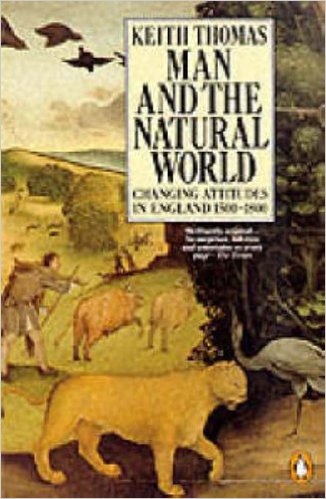
Man and the Natural World: Changing Attitudes in England 1500-1800
Keith Thomas’s classic covers far more than dogs, it’s an interesting account of how English people saw non-human animals, plants, and ‘nature’ in general, including landscapes. There’s even an account of trees as pets! Some chapters and sections are of particular interest for dog people, for example in ‘Privileged Species’, Thomas discusses horses and dogs, noting that the way dogs were written about reflected the social status of their owners. ‘Privileged dogs’, especially hounds and lapdogs, were kept by the upper classes, and in fact from the late fourteenth century, there was a ban on ordinary people owning hunting dogs, which were reserved for those of high social status.
From the twelfth century, poets were writing about faithful hounds. Later, in the sixteenth century, mastiffs were also allowed to be ‘faithful’, after a royal mastiff protected his masters. Yet most working dogs, such as sheepdogs and watchdogs, didn’t get such good coverage. They were either ignored, or seen as less ‘noble’, and, as most people in England couldn’t read or write in this period, we learn little about dogs kept by ordinary folk.
The chapter on ‘Compassion for the Brute Creation’ looks at how attitudes towards non-human animals changed over time. There was a move away from the belief that humans were entitled to do what we wanted, as a superior species, towards a more civilized stance, that humans had a duty to be compassionate. Even in the fifteenth century, writers were arguing that, while humans had the right to domesticate and use animals, we shouldn’t cause them unnecessary suffering. It wasn’t until the eighteenth century that sports involving cruelty, such as baiting animals, started to be banned. Again, the debates at the time reflected the social status of people involved. The focus was on baiting and other activities that were enjoyed by poor people. Hunting with hounds and horses was a sport of the nobility, so they didn’t see it as brutal, and it wasn’t made illegal, though some critics argued that hunting was brutalizing.
This book combines well with Harriet Ritvo’s ‘Animal Estate’, which continues the story of our relationships with nonhuman animals during the Victorian period. Though the title of ‘Man and the Natural World’ describes the period covered as 1500-1800, there are in fact enough references to the nineteenth century for the two books to overlap very nicely.
‘Man and the Natural World’ grew from Cambridge University lectures given in 1979, so the book is something of a classic. There are copious notes at the end, for anyone wanting to explore the topics further, yet, despite being a serious work, this is a very accessible book, and one you could read at bedtime.
Review by Alison Lever



